
INTERVIEW WITH CONTEMPORARY INDIAN ARTIST SUDIP ROY
I first encountered the work of contemporary Indian artist Sudip Roy through a calendar featuring his famous Charulata series, while visiting artist Laxman Aelay’s studio in 2008. In that very first moment, I thought, here is a master artist who produces very high caliber and sensitive works. Over the decade since then, I have seen Sudip work with many mediums, constantly trying to attempt something new, different and daring to take the road less traveled. His most recent paintings and sculptures in aluminum and steel have been particularly interesting. This new series is bold, minimalist, playful and striking, all at once.
In this recent interview, Sudip offers more insights behind his recent foray into metals and the power of abstraction.
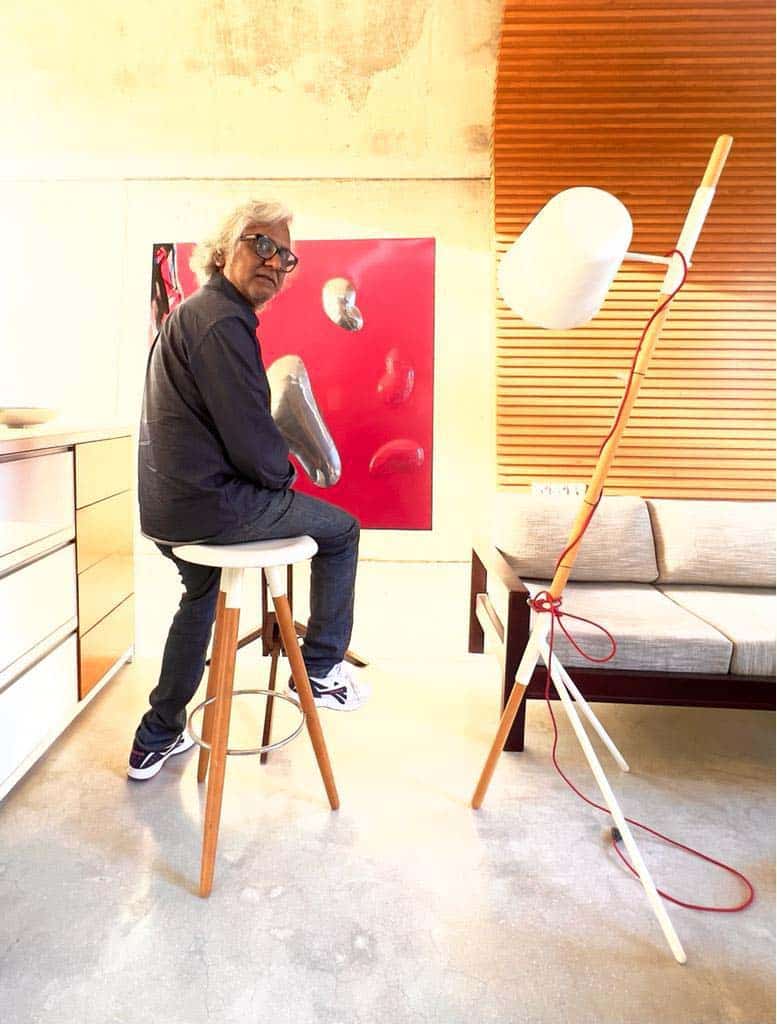
Over the years, you have worked on a wide variety of subjects and mediums. What sparks your interest?
I am always trying my hand at new things. In fact, I have always felt that I should work on different themes in different mediums and materials – watercolor, charcoal, pencil work, oil and wash painting, which is rare nowadays. Earlier I would do more realistic work, but now I am focusing on color and form.
To express what I want, feel and think — my language — I do not believe in using a particular medium. So, I may leave the canvas and use metal to express myself. I am now working more on metal and wood, specifically in steel and aluminum.
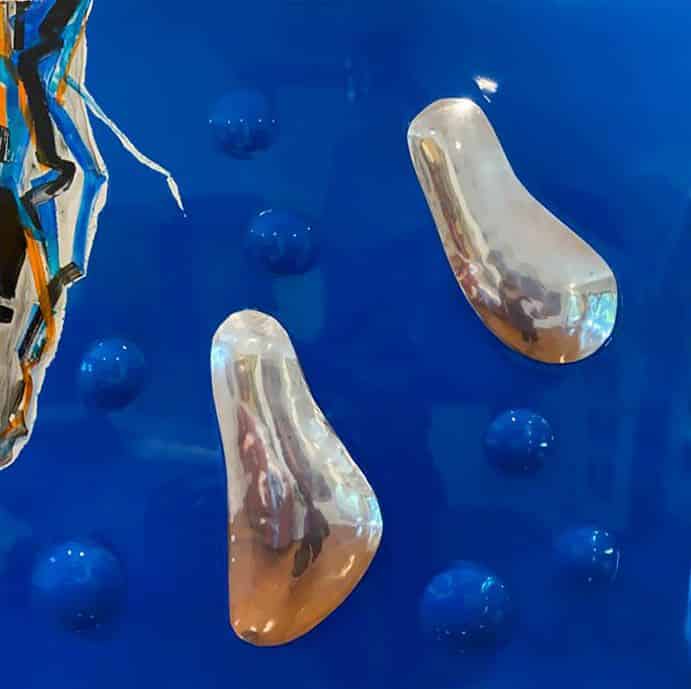
In these latest works, you emboss on aluminum. Can you tell me a little bit about this technique?
The technique of embossing, though simple, is quite a lengthy one. To explain it in basic terms, first you create a design. Then, you make the molding. And then you do the embossing. Once you have embossed, you clean it with acid, process it and finally color it. Normally speaking, there are four layers of colors that are applied — a base color, an acrylic coat and the metallic colors. And you have to give each color time to dry before moving on to the next layer.
Do these artworks have a particular message behind them?
People tend to look for meaning in paintings. I believe that paintings speak for themselves. Abstraction is like classical music. Just as sur, taal and their sangam create their own environment, color and form also create their own environment. Art has its own language. We cannot box it in words — you need to feel it.
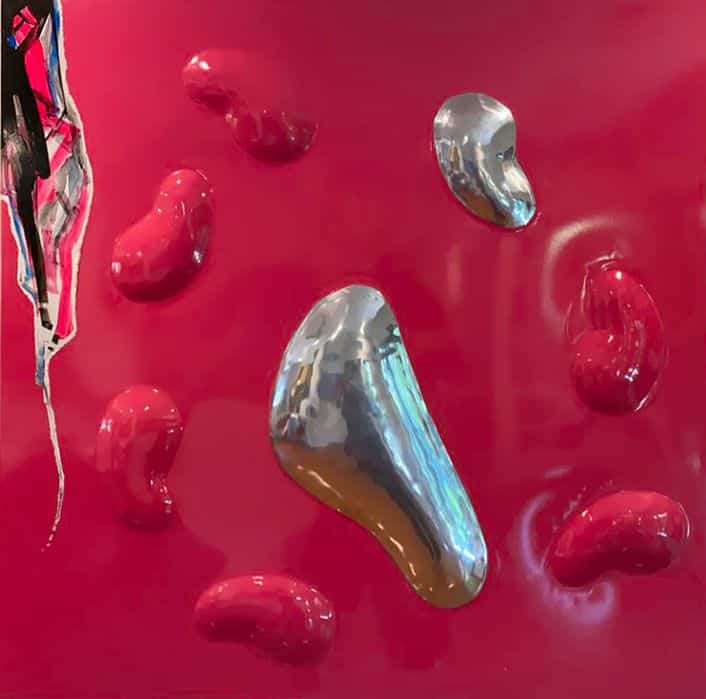
Some of the works on aluminum are in one solid color, with a few contrasting lines or shapes breaking the visual flow. What do these shapes denote?
I may appear calm and collected on the surface, but there are so many thoughts going around in my mind. I wanted to show that effect in the paintings, and the few lines on one side give it a certain speed. The artworks appear cool, but they hide a cyclone — there is something churning beneath the surface.
How did you choose the titles in this series?
People would call these paintings abstract. I would instead describe them as non-figurative or non-realistic work. I have not given the series a name. But the title of each painting is the time — either when I began the painting or when I finished it. For example, 10 a.m. or 12 p.m.

You have also recently worked with steel sculptures. What would you say is the advantage of using this material?
As a metal, steel is difficult to control, particularly in comparison to iron and copper that can be easily bent and molded. But my main interest stemmed from the fact that you always get a reflection in steel, just like in a mirror. And it is through this reflection that you become a part of my painting or sculpture.
How would you trace your overall shift from realism to abstraction?
I am not denigrating other forms of art, but I do believe that there is a sadhana (meditative effort) within abstract art. It is the result of an extremely sensitive process. I had a teacher who always used to say that if you do not know how to draw or paint well, you will finally resort to creating abstracts. But everything is a process, and if you learn the basic language or grammar of painting, only then can you work with it or break it. No one can say that it is because I cannot draw or do realistic work, that I do abstract. I have gone through the entire process.
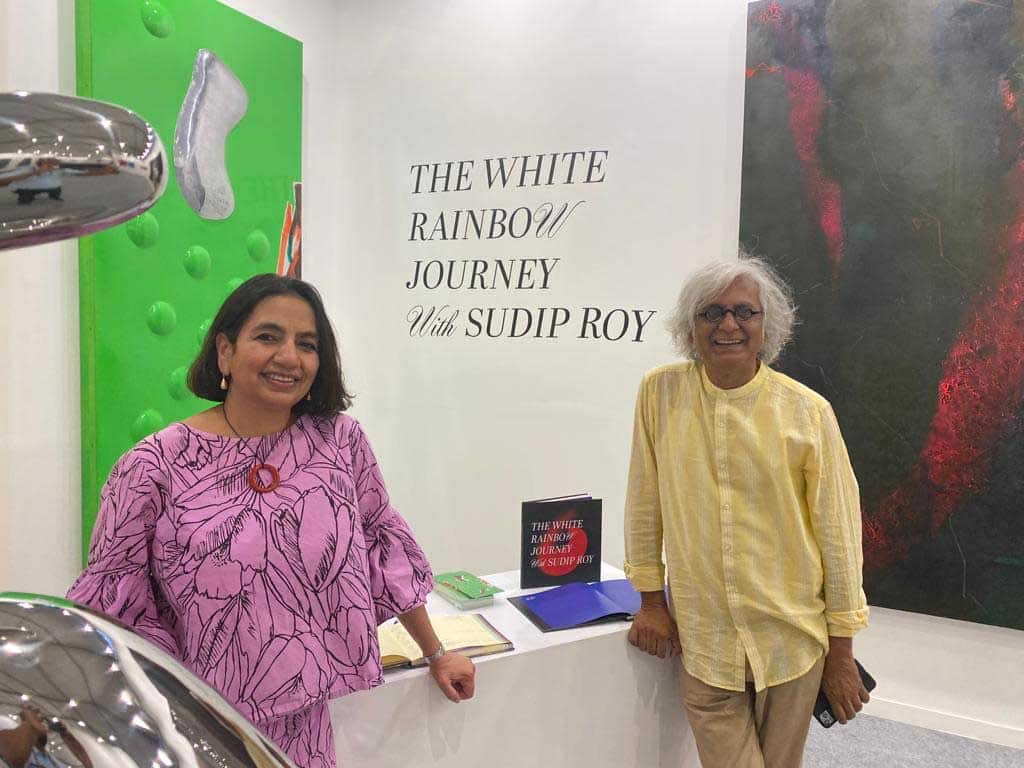
If you were to use three words to describe your current art, how would you describe them?
Color. Form. Sensitivity.
From your earliest series to now, how would you outline the evolution of your artistic approach?
Twenty years earlier, my hair was jet black; it is now white. Physically, my stamina has reduced, and temperamentally, I have become calmer. So, if there is a change in my thoughts and body structure, how can my art not show a change?
I work from my heart. In my art, I always try to attempt something new, and I want to create something new and different. I will not repeat what I have done earlier. If I continue to do what I did five years ago, I will feel that I am not a creator, but I am an offset machine!
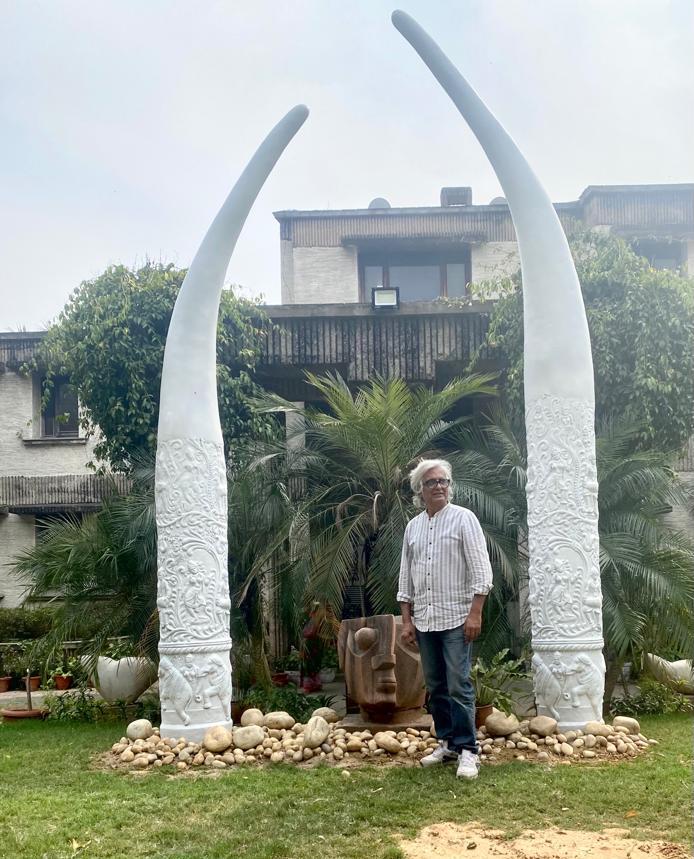
Thank you so much, Sudip.
I hope you have enjoyed learning more about the process and concepts behind his recent works. You can also read more about his career and various themes in a past profile on our blog. To browse our curated collection of contemporary paintings by Indian artist Sudip Roy, visit https://laasyaart.com/sudip-roy/. If you would like to make an appointment to see these works in person at our Indian art gallery in Palo Alto, please reach out at info@laasyaart.com or +1 650-770-9088.
— Sonia Nayyar Patwardhan

Leave a Reply
You must be logged in to post a comment.